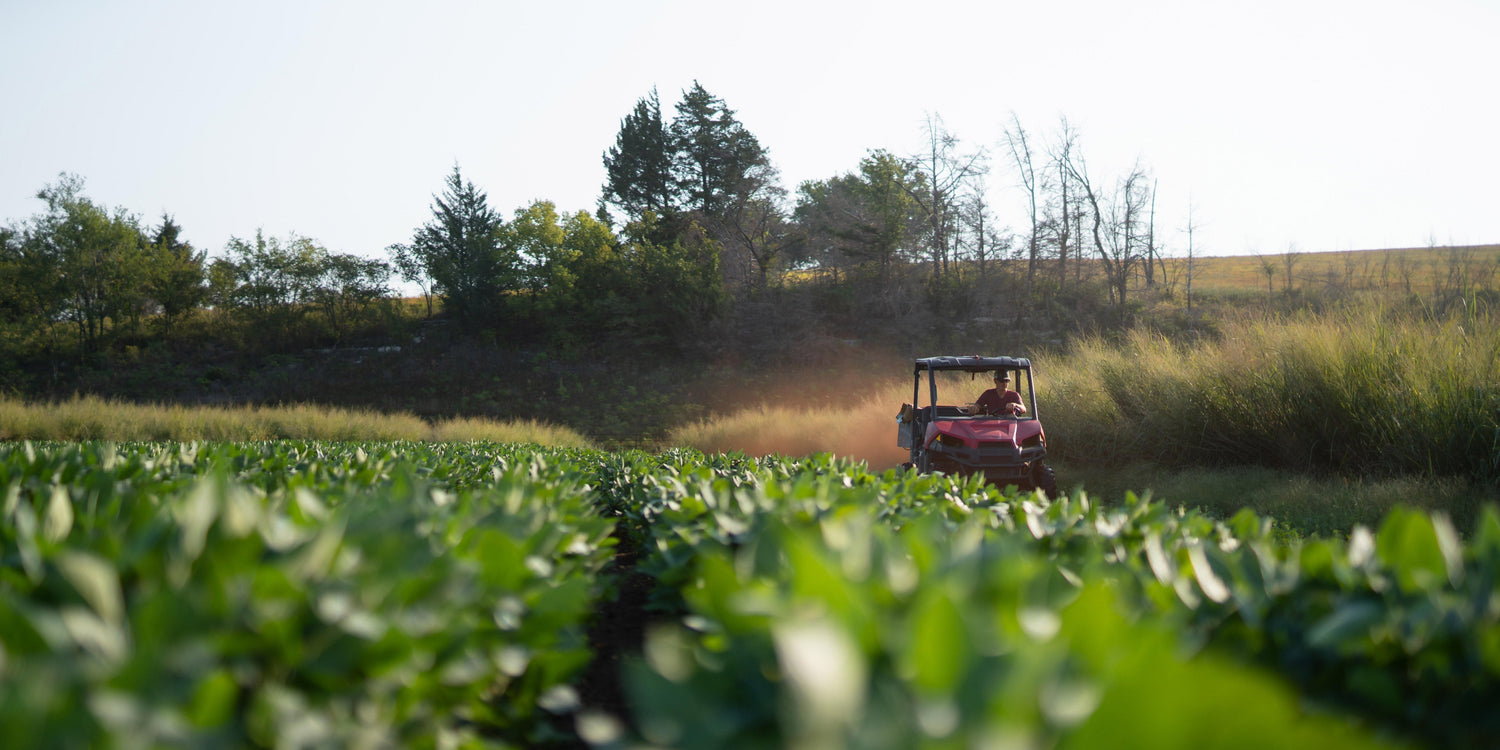When I think about what sets a great food plot apart, three things come to mind that should take precedence before soil fertility is taken to a deeper drive. These three things are:
1- Safety – Is it a secure place deer feel comfortable entering? Has it historically been a safe environment?
2- Pressure – Are you keeping hunting and human pressure low so deer feel confident visiting during daylight?
3- Palatability- Is the food you’re offering the most desirable and nutritious option in the area?
Number 3 is where the deeper dive into food plot management comes into play with probably the second most asked question after “what seed do I plant?” And that question is:
“What fertilizer do I use for my fall food plots?”
It’s a question almost every serious land manager asks during food plot planning—whether for spring or fall. And it’s a good one. The fertilizer you apply can make a substantial difference in how well your food plots attract and hold your whitetail herd.
While there are many nutrients important for plant growth, we’ll start with two of the most common fertilizers in agriculture (aside from nitrogen and potash):
- MAP (Monoammonium Phosphate or 11-52-00)
- DAP (Diammonium Phosphate or 18-46-00)
Both are considered a primarily phosphorus fertilizer. So why choose one over the other? The answer starts with knowing your soil pH.
Why Soil pH Matters for selecting fertilizer.
Soil pH is absolutely critical for all fertility decisions—especially when choosing between MAP and DAP. Here’s a quick guide:
- Acidic soils (below 6.0) → DAP is better option if available at your local farm supply location.
- Neutral soils (6.0–7.0) → Either product works well.
- Alkaline soils (above 7.0) → MAP is preferred.
Don’t get overly caught up in picking the “perfect” one—either will work, but if the goal is to begin making changes that give one the edge, it’s a great place to start. The bigger differences show up when pH trends more in the extremes to lower or higher, which is why a soil test is so important.

It’s About More Than Fertilizer
Fertilizer is just one factor in creating a plot that outperforms your neighbor’s. When I think about what sets a great food plot apart, three things come to mind.
We’ve all seen deer hanging up in the distance, silently hoping they’ll turn our way. Sometimes they do. Sometimes they don’t. It could come down to as simple as which food option tastes better to them, which one do they feel safer in, or a myriad of other possibilities.
Stacking every possible advantage in your favor—from the right fertilizer to plot design to deer pressure management—makes it far more likely that the buck you’re after will close the distance.
Takeaway
So, the next time you’re planning a fall food plot, start with your soil test. Use the pH reading to guide whether MAP or DAP makes more sense for your field, and remember: fertilizer is just one piece of a much bigger puzzle.






